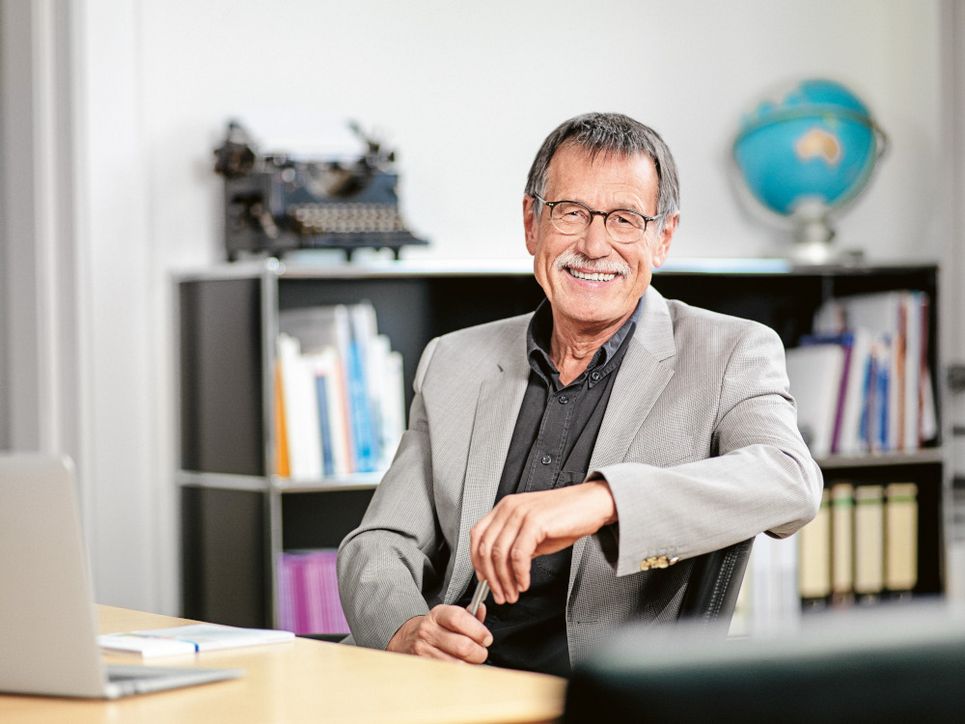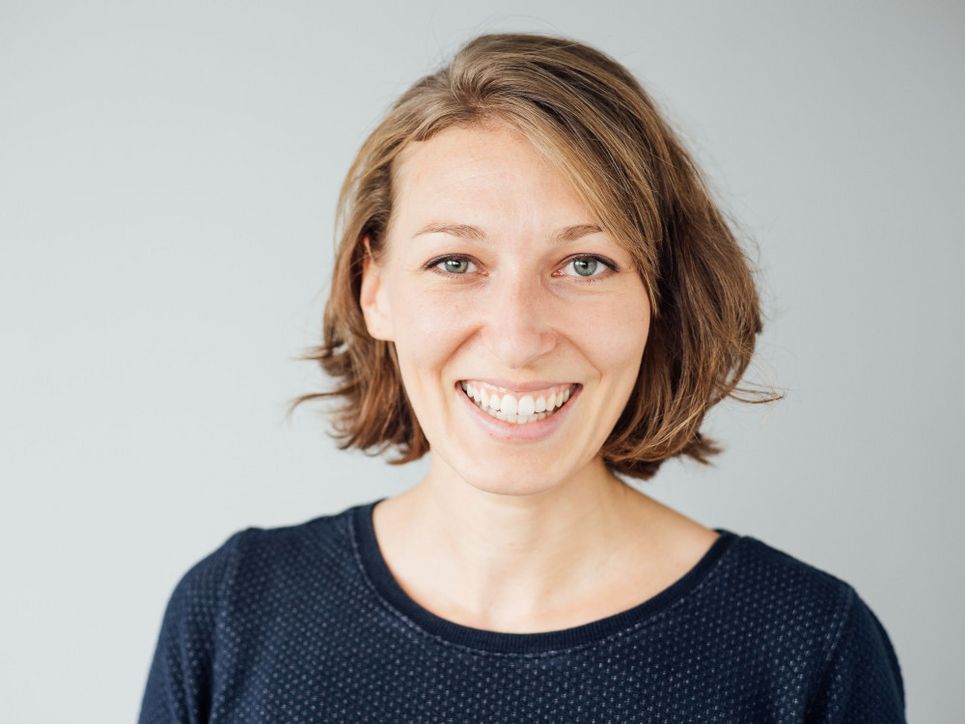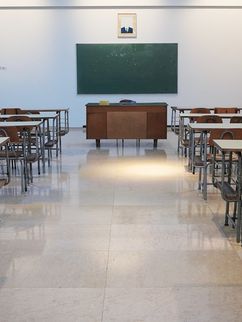How do you reduce personal contact while keeping classes running? When the pandemic broke out in spring 2020, everything had to happen very fast at education establishments worldwide. Within the Global Learning Council (GLC), Leibniz Association researchers recently investigated how universities and other higher education institutions (HEIs) dealt with the exceptional circumstances and what solutions they found. leibniz spoke to the Co-Chair of the GLC, Friedrich W. Hesse, and project manager Anne Leiser, who coordinated the study, about the pandemic-related digitalisation of teaching and about the opportunities and limits of long-term digital transformation.
Ms Leiser, Mr Hesse, the digital transformation of education is at the heart of your work at the Global Learning Council. Why does it deserve your full attention?
FRIEDRICH W. HESSE Learning has acquired tremendous potential through new media, because they can be used to reach far more people than ever before. And if we go one step further, then even forms of personalised learning become possible, because today, with learning analytics and adaptive systems, we have possibilities that we did not have previously. We are entering a new era.
ANNE LEISER For me personally, education lays the foundations for social participation, and our work offers the opportunity to intervene in society and change people’s lives by using digital methods to create a shared level of knowledge and a shared world view, on which society can build in the future. In this respect, one of the aims of digital education is always to enlarge the room and extend participation to even more people.
Why do we need an institution like the GLC and why is it vital that these aims are achieved?
HESSE What’s special about the GLC is that it is not an international conference of academics. It is a place where leaders come together – people with responsibility for large educational establishments. It facilitates an exchange of ideas at this level that would otherwise not normally happen. The problem is that we researchers have a range of reliable findings that are good and practical, but which are still not being adopted at leadership level. I think now that we need to approach things the other way round, and that’s exactly what the GLC does: it brings together people who can exert an influence – and can do so across national borders.
HEIs in different countries can learn a lot from one another
FRIEDRICH W. HESSE

Let’s talk about the study that you recently carried out on the emergency measures implemented by HEIs worldwide during the pandemic. What prompted the research and what did you want to find out?
HESSE The Global Learning Council thrives on face-to-face communication, and we should have had a meeting in Nairobi ages ago. That was not possible during the pandemic, so we considered how else we might link up and make use of the digital expertise that exists within this group. That’s when we had the idea of a global study. Our thinking was that, with a survey like this, we would encounter very different economic systems – in the USA for instance, there are fees for higher education; in Germany there aren’t – different cultural environments and different stages of development between countries. We found that exciting because we believe that HEIs in different countries can learn a lot from one another – Germany from Kenya, for instance, which is a lower-income country but is implementing some fantastic ideas.
LEISER The study was our attempt to see whether this disruptive influence – the accelerated digitalisation enforced by the pandemic – has had a positive impact on the wider, slower digital transformation taking place in higher education. After all, promises that digital transformation will make teaching and learning better generally and create broader access to education have been doing the rounds for a very long time. We wanted to check whether such effects can be detected during the pandemic or whether problems are emerging.
How did you proceed?
LEISER We started with a questionnaire, which we sent to HEI leadership teams in all parts of the world in summer 2020. We asked them about ad-hoc measures, long-term aims and exciting innovations taking place at the institutions. Based on the 80 or so answers we received from vice-chancellors, presidents, rectors and other institutional representatives, we realised that there are no clear answers because there are too many factors at play. So we placed a greater emphasis on the findings from the in-depth interviews in the second phase of the investigation and validated our findings in another questionnaire round in autumn 2020. The in-depth interviews are the centrepiece of the study, but we also benefited from the two rounds of questionnaires sent out at different times, because the temporal progression enabled us to gain numerous insights into the development of digital teaching worldwide.
The quality of teaching did not quite match the standard of face-to-face teaching.
ANNE LEISER

How have HEIs reacted to the pandemic in the different regions? What measures did they take to tackle the altered situation?
LEISER The HEIs that took part in our study all shifted to online teaching almost immediately, most of them switching to nearly 100% online teaching. Otherwise, the central finding from the first round of questionnaires was that there was no single solution for all institutions. A very large number of disparities emerged – including in places where one might not have expected to find them. One example: at a large university in the USA, a fifth of students said they had been affected by food insecurity during the pandemic – in the country that often sees itself as the most developed country in the world.
HESSE Interestingly, these disparities appeared at very different levels. One might automatically think of students who don’t have a laptop at home or who don’t have internet access, and there are of course students in that situation, but – and this is at least as important – inequalities like these also exist among lecturers. The training they received varied widely and they had very different technical options available to them. Even the financing options, the infrastructure and the services available to run the infrastructure were very different.
What problems occurred at the HEIs during the pandemic-related overnight digitalisation process?
LEISER Overall, university leaders and lecturers went to great lengths to offer students good solutions, with plenty of motivation and energy, and this received a good deal of praise. Nevertheless, some of the solutions developed are perhaps not so suitable in the longer term – in part because they push the limits of personal resources, especially of lecturers. One problem in some cases was access, because not all students or lecturers have laptops or other mobile devices, and not all of them have an internet connection or broadband or the option of using mobile data. On the other hand, in many places there was a lack of digital skills – the ability to handle the technology and to use the software properly and effectively. Sometimes there was no adequate learning environment available, with some students in flat-shares shutting themselves in the bathroom for lectures. Those who didn’t have internet access at home drove to hotspots in the university car park or used the Wi-Fi in churches. To sum up, there were very many solutions that are not necessarily the best solutions in the long term.
We asked four universities within the GLC network which challenges they are facing due to the Coronavirus Pandemic and which opportunities arise for teaching an learning. You can find the interviews here – with Bitange Ndemo from the University of Nairobi, with Denise Pires de Carvalho from the Federal University in Rio de Janeiro, with Suzanne Walsh from Bennett College in Greensboro/North Carolina and Tan Eng Chye from the National University of Singapore.
Looking at the specific digitalisation measures implemented by universities and the quality of teaching – did your research show a desirable move towards a professionalisation of digital teaching formats during the pandemic?
LEISER No such improvements were visible in our 2020 survey. But we are currently carrying out a follow-up study and we can already see that a lot of the experience gathered over the past 18 months is currently leading to new strategies and professionalisation. Looking at 2020, one can’t say that everything was bad because there were many positive ideas. All in all, however, the quality of teaching did not quite match the standard of face-to-face teaching, or achieve the full potential of well-prepared and well-considered digital teaching.
Looking beyond pandemic measures, in your view, what are the impacts of HEI learning processes going increasingly digital? Does this open up new opportunities? And what are the limits to this development?
HESSE In terms of limits, we can say that face-to-face meetings offer many opportunities to chat informally. Regarding this informal aspect, I personally have the feeling over the past 18 months that I have not been at all well informed. In this sense, the digital format restricts the scope of communication. In addition, the internet bandwidth is often not sufficient for video calls, or the sound is distorted. These are some of the typical side effects. At the same time, however, a much more effective national and international exchange of views is taking place among researchers and on a much larger scale that is very economical in terms of time and money.
LEISER Digital communication has to be more purposeful – if you want informal chat, you have to plan it. It doesn’t happen spontaneously. There has also been some fascinating research into ‘Zoom fatigue’, which many of us have become familiar with over the past year: we evidently absorb less information when we stare at screens and the sound comes via a microphone than if we have people live and in colour in front of us. Our brains have to perform additional cognitive effort. It’s as if we need extra computing power. When you take part in a virtual event, your ability to concentrate plummets after two hours, if not before. On the other hand, digital teaching opens up access to education for people who might not otherwise be able to study in a traditional way because they are constrained by time and place. In an ideal situation, a good blend and plenty of flexibility could offer the best of both worlds.

In your view, what are the most common mistakes people make regarding digital transformation? And are these evident in the study you conducted?
LEISER One common mistake is to think that there is one solution or that all content can be digitised equally effectively. For instance, if art schools want to make their teaching content digital, that is a major challenge. Efforts are being made to portray certain things – chemical and medical lab experiments, for instance – using virtual reality. But implementing something like that requires a large investment.
HESSE We won’t be able to replace social interaction, or deal with the feelings of isolation that emerged during the pandemic, through virtual means alone. In addition, a digital divide is opening up between different income groups: children whose parents are on a tight budget do not have certain devices, and some of them do not have internet access or space to study. They simply do not have the same conditions as children growing up in better economic circumstances. The limits to a fair education situation – even within Germany – really are very narrow and we need to be mindful of that. As far as I know, no one has found the magic answer to this yet.
What should teaching in HEIs around the world ideally look like in the future? What are the opportunities offered by digital transformation?
HESSE In the Middle Ages, the children of very wealthy parents had private tutors, who worked out how each individual child thought, how they learned, whether they had had a good day or a bad day and how they could best be supported. I would like to introduce a little of that through personalised learning environments – in line with what is currently happening in medicine. Personalised medicine follows the same idea because a specific medicine is only good for me in an average situation. Maybe I personally need a slightly higher or lower dose. Achieving this type of fine-tuning in teaching is a vision that I would love to see realised.
LEISER I would like to see digital skills – the ability to handle digital tools properly, effectively and well – taught at school. Anyone who doesn’t have this ability and later goes on to university, will struggle and may not even start their studies. Thinking about digital skills right along the education chain is key. There is a connection to media skills here too and the ability to deal confidently with academic content: to take part in a digital world – whether politically, socially, or in terms of education – you need training to acquire certain skills and knowledge. And the better we do that, the more likely we are to avoid rifts opening up between people.
The Global Learning Council (GLC)is a virtual organisation that brings together thought leaders in the area of effective use of technology to provide access to education and improve learning outcomes around the world. The GLC was founded in 2013 and offers a platform for connecting leaders, organisers and innovators from academia, industry and the non-profit sector to foster cooperative processes and advance innovative strategies for digital learning.
Leibniz President Matthias Kleiner is the chair of the GLC. The head office of the GLC currently resides with the Leibniz Association in Berlin, Germany.



